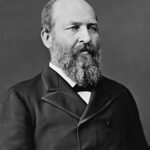The Republican Party Factional Division
James A. Garfield inherited a deeply split Republican Party in 1881. ⚔️ Two major factions battled for control and patronage. The Half-Breeds, led by James G. Blaine, favored moderate civil service reform. The Stalwarts, headed by Roscoe Conkling, opposed reform and demanded traditional spoils system rewards.
Garfield’s Controversial Choice
President Garfield openly favored the Half-Breed faction over the Stalwarts. He appointed James G. Blaine as Secretary of State without consultation. This decision violated traditional party unity expectations. Garfield then nominated Half-Breed allies to key federal positions in New York. These appointments directly challenged Stalwart leader Roscoe Conkling’s political machine.
The Patronage Battle Intensifies
📊 Conkling controlled New York’s federal appointments for years through Senate courtesy. Garfield’s nominations bypassed this system entirely. The president nominated William H. Robertson as New York Custom House collector. Conkling viewed this as a direct assault on his political power. ⚠️ The Republican Party factional warfare reached unprecedented levels of bitterness and personal animosity.
Impact:
Immediate Political Consequences
🔥 Roscoe Conkling and fellow Senator Thomas Platt resigned from the Senate in protest. Their dramatic resignation shocked the political establishment nationwide. The Republican Party factional split became a national spectacle. Party unity crumbled as newspapers took sides in the bitter dispute. Congressional Republicans faced pressure to choose between competing factions.
The Tragic Assassination Connection
Charles Julius Guiteau, a disappointed office-seeker, became increasingly unstable during this period. He believed Garfield owed him a federal appointment for campaign support. Guiteau identified with the Stalwart faction and their grievances against Garfield. 📉 The toxic political atmosphere contributed to his decision to assassinate the president. On July 2, 1881, Guiteau shot Garfield at a Washington railroad station.
Long-term Party Transformation
Garfield’s death ironically accelerated civil service reform efforts he had supported. Chester A. Arthur, his Stalwart successor, championed the Pendleton Civil Service Act. 🌍 The assassination shocked Americans and discredited the spoils system permanently. Republican factionalism gradually declined as patronage became less central to party operations. The tragedy fundamentally transformed American political culture and government employment practices.
